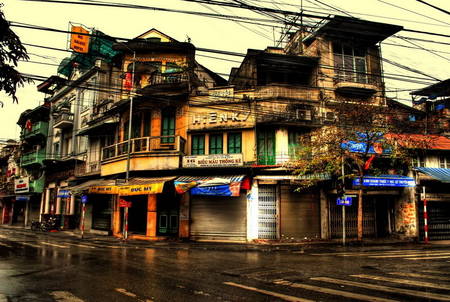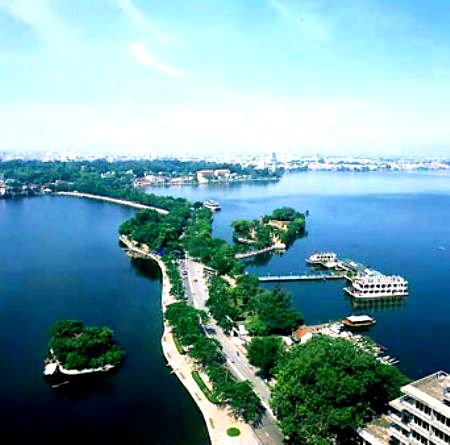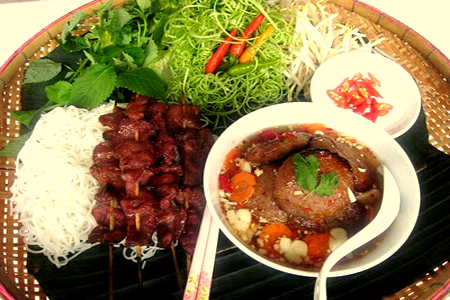Hanoi, the heart of Vietnam

As the capital of Vietnam for almost a thousand years, Hanoi is considered to be the cultural centre of Vietnam, where every dynasty has left behind their imprint. Even though some relics have not survived through wars and time, the city still has many interesting cultural and historic monuments for visitors and residents alike.
The architecture of Hanoi

For starters, the boxy, concrete architectural design trends that swept through much of the world in the 1970s and 1980s mostly skipped right over Hanoi. As a result, Hanoi maintains a charming blend of French colonial architecture, mixed in with traditional Vietnamese designs, and now with very western-looking skyscrapers.
The Old Quarter is one of the first places you'll want to visit in Hanoi if you love looking at old buildings. It's in this popular tourist spot that you'll find the famous Temple of Literature and other landmarks.
Many of the French buildings from the nineteenth and early twentieth centuries remain in Hanoi, such as the Grand Opera House, the Presidential Palace, the National Museum of Vietnamese History, and St. Joseph Cathedral. The outsides of these buildings harken back to a previous chapter in Vietnam's history, while the insides are filled with relics of Vietnam's history and culture. Inside the National Museum of Vietnamese History, for example, you'll find antiques and displays that document the thousand years between the tenth century and the twentieth.
Lakes of Hanoi

Besides its buildings, Hanoi is especially well-known for its many lakes. In fact, there are so many lakes in Hanoi that it is sometimes referred to by its nickname, 'city of lakes'. The most famous lake is probably the West Lake, known in Vietnamese as Ho Tay. With its banks dotted by Buddhist temples, the West Lake is a great place to tour.
Hoan Kiem Lake is another popular lake amongst tourists. With a curious pagoda in the centre of the lake known as the Turtle Tower, and a legendary history that involves an emperor and a magic sword, Hoan Kiem Lake is one of those places in Hanoi that takes visitors back to another time.
Shopping and Dining in Hanoi

If history and urban green spaces aren't your sort of thing, you might be pleased to know that Hanoi is also home to many modern shopping centres. Though you might still find a traditional, open-air market in Hanoi's Old Quarter, these days the young and hip in Hanoi visit places like the Trang Tien Plaza and the Vincom City Towers.
At the end of a long day of touring, walking, and shopping, you'll be ready to relax in one of Hanoi's restaurants. If you like Vietnamese food, you'll be sure to be delighted by the variety of food available in Hanoi. Be sure to ask what words on the menu mean before you; in North Vietnam diners do have somewhat more eclectic tastes than in the rest of Vietnam
Alternatively called Hanoi's Old Quarter, Ancient Quarter, or just simply 36 Streets, the Old Quarter of Hanoi is a must-see for anyone visiting Vietnam. Located at the northern end of Hoan Kiem Lake, the Old Quarter is the home of most the economical hotels, tourist shops, and cafes in Hanoi.
The Old Quarter is truly old: people have called Hanoi home continuously for more than 2,000 years, and the Old Quarter is the first area settled by humans. Most of Vietnamese history and culture has unfurled from the location of the Old Quarter. Unlike other cities with “old towns”, which by-and-large have become nothing more than souvenir shops and cheap tourist attractions, Hanoi's Old Quarter is still the vibrant centre of life in Hanoi. With people on the street by 5:30 a.m., and restaurants opening by 6:00 a.m., the hustle-and-bustle of the Old Quarter doesn't really start to slow down until 9:30 at night.
The 36 streets that make up the Old Quarter are all named for the type of good or serve they used to sell there. There are streets named for bamboo, silk, silver, medicine, shoes, fans, chickens, and even coffins. This method of naming the street after goods or services goes back to the days when craftsmen would work together in guilds to produce and sell their wares. Even today, walking through the Old Quarter, you might come across an entire block of nothing but paper makers, tinsmiths, or tailors.
(vietnamtravel)










 Share:
Share:




